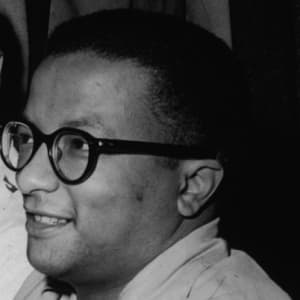
Margaret Corbin
Margaret Corbin fought in the Revolutionary War and was the first woman to receive a pension from the military.
Who Was Margaret Corbin?
Born in 1751 in Franklin County, Pennsylvania, Margaret Corbin fought in the Revolutionary War and was the first woman to receive a pension from the military, after sustaining severe wounds. She is the only Revolutionary War veteran buried at the West Point Military Cemetery.
What Was Margaret Corbin's Role in the Revolutionary War?
At age 25, Margaret Corbin joined her husband John in the Continental Army’s fight against the British. Many women at the time went to war in the role of “camp follower,” performing tasks like laundry, sewing, carrying water or nursing the wounded. While 18th-century military life was harsh and risky, the dangers of staying alone on deserted frontier farmland could have been even worse, writes author Carol Berkin in Revolutionary Mothers.
So when John enlisted in the First Company of Pennsylvania Artillery, Margaret went along. His orders took them to New York’s Fort Washington, a battlement at the extreme northern tip of Manhattan, on high ground above the Hudson River.
On November 6, 1776, the revolutionaries faced an attack by mercenaries fighting for the British. John was an assistant gunner, helping to clean and load a cannon. But when the gunner was killed, John replaced him and his wife stepped in as his assistant. Then John himself was killed, and Margaret again stepped in, continuing to fire. During the fighting, her shoulder, chest and jaw were badly struck by grapeshot, a cluster of small metal balls stuffed in a canvas bag and fired from a cannon; The effect was like shrapnel, only heavier. The Battle of Fort Washington was a significant loss for the revolutionaries, and Margaret was captured, but released on parole. Due to her wounds, her left arm was disabled for the rest of her life.
Receiving a Soldier's Pension
As a wounded veteran, Corbin was entitled to a soldier’s pension. In 1779, the Continental Congress initially offered her “half the pay and allowances of a soldier in service,” including a set of clothing, or its value, to replace those ruined in the fighting. She was later awarded extended benefits.
After recovering, she joined the Invalid Regiment at West Point and tended the wounded. She married a fellow war veteran in 1782, but he died a year later.
How Did Margaret Corbin Die?
Life wasn’t easy for this twice-widowed war veteran with a rough edge who, according to some accounts, was so disabled she could not bathe herself. She lived out her days not far from where she had seen war on the front lines, in a town called Highland Falls, New York, just below West Point along the Hudson River,
“There she became a figure of scorn, rather than admiration,” writes Belkin. “When she died in 1800, few local citizens realized that the sharp-tongued, alcoholic woman known as ‘Dirty Kate’ had taken ‘a soldier’s part in the war for liberty.’”
Corbin died, just shy of 50.
Margaret Corbin Drive and Memorial
Corbin was initially buried in an obscure grave along the river. In 1926 the Daughters of the American Revolution discovered that Corbin’s story had been neglected. Her remains were found and reburied at the West Point Military Cemetery, where a memorial to her was established.
Her legacy also lives on in upper Manhattan, where a park plaza and road are named for her. But that naming wouldn’t come until the 1970s, after an ironic twist of history was discovered.
In 1776, after winning the Battle of Fort Washington, the British renamed the area Fort Tryon, after their Major General Sir William Tryon. Eventually, the heavily forested area became upper Manhattan’s Fort Tryon Park, a lush public space with steep hills, exposed schist and grand river views.
In the 1970s, during America’s bicentennial, it came to light that the park was named for a British military leader.
In reaction, a local campaign emerged to rename the park for an American hero, and along the way Corbin’s story resurfaced, according to the New York City Department of Parks & Recreation. While Fort Tryon Park retained its name, a compromise was struck in which the entry plaza and the drive within the park were named for Corbin.
Childhood and Early Life
Born in 1751 in Franklin County, Pennsylvania, Corbin was effectively orphaned when she was five years old: When she and her brother were away visiting an uncle, Native Americans killed their father and captured their mother. Raised by her uncle, Margaret married John Corbin in 1772.
Women in the American Revolution
Female combatants were few in the war for independence, though some disguised themselves as men to fight. More women played decisive but background roles as spies, saboteurs and messengers. The strict delineation of gender roles and expectations often gave them cover from the unsuspecting eyes of the British. Tales of their heroic deeds were often recorded by local historians or told over generations, according to Berkin, rather than in national histories.
Additionally, while New Jersey’s Molly Pitcher may be the most famous female name from the Revolutionary War, it is unclear that the name applies to one person. She may be a composite of women who carried pitchers of water for soldiers to drink and to pour over hot cannons.



